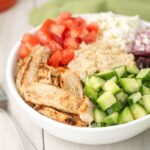Imagine a picnic, not just a meal, but a mindful experience nourishing both body and soul. This guide unveils the art of crafting a heart-conscious picnic spread, a vibrant tapestry woven with organic ingredients, sustainable practices, and an atmosphere of serene enjoyment. From meticulously selecting locally sourced, seasonal produce bursting with flavor and nutrients to thoughtfully arranging your feast amidst nature’s embrace, we’ll journey through each step, transforming a simple picnic into a celebration of health, sustainability, and mindful connection.
We’ll explore delectable, heart-healthy recipes, easy-to-follow instructions, and tips for adapting them to various dietary needs. Discover how to minimize your environmental impact with eco-friendly choices and create a truly unforgettable experience, enriching your well-being and fostering a deeper appreciation for the simple pleasures of life. Learn to curate a picnic that’s not just visually stunning but also deeply nourishing and ethically conscious.
Recipe Development & Step-by-Step Instructions
Crafting a heart-conscious picnic spread involves selecting recipes that are not only delicious but also support cardiovascular health. This section details three such recipes, focusing on fresh ingredients, lean proteins, and healthy fats, while providing guidance on adapting them to various dietary needs. Each recipe includes a step-by-step guide for easy replication.
Mediterranean Quinoa Salad
This vibrant salad is packed with fiber, antioxidants, and healthy fats, making it a perfect heart-healthy picnic option. The combination of quinoa, vegetables, and feta cheese provides a satisfying and nutritious meal.
| Dish Name | Ingredients | Instructions |
|---|---|---|
| Mediterranean Quinoa Salad | 1 cup quinoa, rinsed; 1 cucumber, diced; 1 pint cherry tomatoes, halved; 1/2 red onion, thinly sliced; 1/2 cup Kalamata olives, pitted and halved; 1/2 cup crumbled feta cheese; 1/4 cup olive oil; 2 tablespoons lemon juice; 1 teaspoon dried oregano; Salt and pepper to taste | 1. Cook quinoa according to package directions. 2. While quinoa cooks, prepare vegetables. 3. In a large bowl, combine cooked quinoa, cucumber, tomatoes, red onion, olives, and feta cheese. 4. In a small bowl, whisk together olive oil, lemon juice, oregano, salt, and pepper. 5. Pour dressing over salad and toss gently to combine. 6. Refrigerate for at least 30 minutes before serving to allow flavors to meld. |
Grilled Chicken and Avocado Wraps
These wraps offer a lean protein source in grilled chicken breast, combined with the healthy fats and fiber from avocado. The whole wheat tortillas provide added fiber.
| Dish Name | Ingredients | Instructions |
|---|---|---|
| Grilled Chicken and Avocado Wraps | 2 boneless, skinless chicken breasts; 4 whole wheat tortillas; 1 ripe avocado, mashed; 1/4 cup chopped red onion; 1/4 cup chopped cilantro; 2 tablespoons lime juice; Salt and pepper to taste | 1. Grill or pan-fry chicken breasts until cooked through. Let cool slightly and slice. 2. In a small bowl, combine mashed avocado, red onion, cilantro, and lime juice. Season with salt and pepper. 3. Spread avocado mixture evenly on each tortilla. 4. Top with sliced chicken. 5. Roll up tortillas tightly. 6. Cut in half and serve. |
Berry and Spinach Smoothie
A refreshing and nutritious smoothie, perfect for a light and healthy picnic option. Berries are rich in antioxidants, while spinach provides essential vitamins and minerals.
| Dish Name | Ingredients | Instructions |
|---|---|---|
| Berry and Spinach Smoothie | 1 cup mixed berries (strawberries, blueberries, raspberries); 1 cup spinach; 1/2 cup plain Greek yogurt (or vegan alternative); 1/2 cup almond milk (or other milk alternative); 1 tablespoon chia seeds; Honey or maple syrup to taste (optional) | 1. Combine all ingredients in a blender. 2. Blend until smooth. 3. Add more almond milk if needed to reach desired consistency. 4. Taste and adjust sweetness as needed. 5. Pour into cups or a thermos and enjoy. |
Dietary Adaptation Tips
Adapting these recipes for various dietary restrictions is straightforward. For vegetarian options, replace chicken in the wraps with grilled halloumi cheese or black beans. Vegan options can easily be achieved by substituting Greek yogurt with vegan yogurt and ensuring all other ingredients are plant-based. Gluten-free alternatives include using gluten-free tortillas or lettuce wraps instead of wheat tortillas.
Presentation & Atmosphere

Transforming your carefully curated picnic spread into a truly enchanting experience involves more than just delicious food; it’s about crafting a visually appealing and emotionally resonant setting. The arrangement of your food, the thoughtful incorporation of natural elements, and the overall ambiance contribute to a mindful and heart-conscious picnic.
A thoughtfully arranged picnic spread is a feast for the eyes as well as the stomach. Think beyond simply placing items on a blanket; aim for a visually harmonious layout that evokes a sense of calm and natural beauty. Color coordination, strategic placement of taller and shorter items, and the use of natural serving dishes all contribute to this effect.
Aesthetic Arrangement of the Picnic Spread
Consider the visual flow of your picnic. Arrange items in a pleasing pattern, perhaps grouping similar colors or textures together. Imagine a soft, circular arrangement of vibrant salads and colorful fruits surrounding a centerpiece of a rustic loaf of bread. Vary the heights of your dishes – a tiered cake stand, for example, can add visual interest. Using natural elements like woven baskets or wooden platters adds texture and warmth to the overall presentation, creating a sense of rustic elegance. The contrast of textures, from the smoothness of a ceramic bowl to the roughness of a wooden cutting board, adds visual depth.
Creating a Heart-Conscious Atmosphere
The atmosphere of your picnic is as crucial as the food itself. A heart-conscious picnic focuses on creating a space of relaxation and mindful enjoyment. This might involve choosing a tranquil location, perhaps a shady spot under a tree or by a gently flowing stream. Soft, calming music playing in the background, perhaps nature sounds or instrumental pieces, can enhance the peaceful atmosphere. Encourage conversation and connection, focusing on shared experiences and gratitude for the present moment. The act of slowing down and savoring each bite, each moment of connection, is central to this mindful approach.
Incorporating Natural Elements
Nature itself can become a key element in creating a heart-conscious picnic ambiance. Scattering wildflowers around the picnic blanket adds a touch of vibrant color and natural charm. Freshly cut greenery, such as sprigs of rosemary or eucalyptus, can be woven into the arrangement, releasing their aromatic essence into the air. Using natural fabrics, such as linen or cotton, for your blanket and napkins adds a tactile element of comfort and complements the overall aesthetic. Imagine a simple, cream-colored linen tablecloth gently billowing in a light breeze, adorned with scattered rose petals and a few sprigs of lavender. The effect is both elegant and deeply calming.
Sustainable Practices
Creating a heart-conscious picnic extends beyond delicious food and beautiful ambiance; it encompasses mindful environmental stewardship. Minimizing our impact on the planet is crucial, ensuring we leave nature as pristine as we found it, ready for future picnics and generations to enjoy. By making conscious choices in our picnic planning and execution, we can significantly reduce waste and promote sustainability.
Eco-friendly choices are not just a trend; they’re a responsibility. From sourcing reusable items to thoughtfully managing waste, every step contributes to a more sustainable picnic experience. Imagine a vibrant, colorful spread, surrounded by nature’s beauty, knowing that your celebration has left no trace of its impact – that’s the essence of a truly heart-conscious picnic.
Minimizing Waste During Preparation and Cleanup
Careful planning significantly reduces waste generated during picnic preparation and cleanup. Pre-portioning ingredients into reusable containers prevents excess packaging. Instead of individual plastic wraps, consider using beeswax wraps or reusable silicone food covers for sandwiches and snacks. Opting for bulk purchases of items like nuts and dried fruits in reusable containers further minimizes single-use packaging. For cleanup, reusable wet wipes or cloths replace paper towels, and biodegradable trash bags make disposal easier. A designated compost bin for food scraps helps reduce landfill waste.
Sourcing Sustainable Picnic Supplies
Investing in reusable picnic essentials is a significant step toward sustainability. Durable, high-quality reusable containers made from materials like stainless steel or BPA-free plastic replace disposable counterparts. Similarly, investing in a set of reusable bamboo or stainless steel cutlery eliminates the need for plastic forks, knives, and spoons. Consider a stylish, reusable picnic blanket made from natural fibers like cotton or recycled materials, rather than a disposable option. A sturdy, reusable cooler bag made from insulated fabric is a far better choice than a Styrofoam cooler. These sustainable supplies not only reduce waste but also add a touch of elegance to your picnic.
Creating a Compostable Waste Plan
Composting food scraps and other organic materials is an effective way to minimize waste and enrich the soil. Before your picnic, designate a separate container for compostable waste. This could be a simple, reusable bucket or a designated section within a larger cooler. Food scraps like fruit peels, vegetable scraps, and coffee grounds are ideal for composting. Paper napkins and other compostable items can also be added. Once the picnic is over, transport the compostable waste to a home compost bin or a designated community composting site. This simple practice transforms waste into valuable soil amendment, contributing to a more sustainable lifestyle.
Creating a heart-conscious picnic is more than just preparing a meal; it’s about cultivating a mindful and sustainable experience. By focusing on organic, locally sourced ingredients, eco-friendly practices, and mindful consumption, you transform a simple outing into a powerful act of self-care and environmental stewardship. Remember the joy of savoring each bite, the beauty of your surroundings, and the connection you forge with nature and those you share the experience with. Embrace the art of mindful picnicking—a delicious recipe for a healthier, happier you.
Questions Often Asked
Can I prepare the food the day before?
Yes, many heart-healthy picnic dishes can be prepared ahead of time. Choose recipes that hold up well and store easily. Consider using airtight containers to maintain freshness.
What if I have allergies or other dietary restrictions?
Adapt recipes to suit your needs! Many heart-healthy recipes are easily modified to be vegetarian, vegan, gluten-free, or to accommodate other allergies. Always check ingredient labels carefully.
What kind of drinks are best for a heart-conscious picnic?
Opt for water, unsweetened iced tea, or fresh fruit-infused water. Avoid sugary sodas and excessive alcohol.
How can I make my picnic more kid-friendly?
Incorporate fun, colorful fruits and vegetables. Cut sandwiches into fun shapes, and involve kids in the preparation to increase their engagement and enjoyment.


:max_bytes(150000):strip_icc()/7218337-93706be49c484c03bebacc143ea6b7ae.jpg)